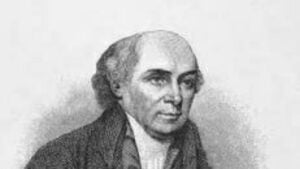
In this blog post, we look at a brief history of the Serampore Mission. By the close of the 18th century, the British established power in most parts of India. Three Presidencies were under their control. They were Bengal, Madras, and Bombay. In the 19th century, England saw the beginning of the modern missionary movement. This was the fruit of the evangelical revival which was the counterpart of Pietism in Germany.
Sometime earlier England saw the formation of the organizations like SPCK and SPG which engaged themselves in the field of mission in various capacities. Now, new societies were formed. The first one was the Baptist Missionary Society (BMS) in the year 1792.
This was followed by the formation of the London Missionary Society (LMS) in the year 1795; Then the Church Missionary Society (CMS) in 1799 and the Wesleyan Methodist Missionary Society in 1813.
Starting of Missions
With the consolidation of British power, new societies began to think about starting missions in India. In India, East India Company officials were sympathizers of German Missionaries. At the same time, they were not willing to take up missionary work as a policy.
In fact, there was staunch opposition to involving indirect mission work. In England, William Wilberforce who was an evangelical reformer advocated that the company should take direct responsibility for promoting the spiritual welfare of the people in India.
But this proposal was rejected and this negative policy continued for almost twenty years. This rejection was purely based on material consequences. They did not want to lose any trade in the conflict of religious conversion.
Even though a negative attitude was taken by the official policymakers, the idea of involving in the mission gained more and more strength. Even inside the East India Company itself, many influential people were perceiving this idea.
William Carey

During this period William Carey came to Bengal. He was a self-educated company pastor. William Carey got a stipend by teaching in a village school. He also worked as a cobbler for his living.
William Carey was one behind the formation of the Baptist Missionary Society. On reflecting upon the Old Testament portion Isaiah 54: 2-3 he observed “Expect great things from God, attempt great things for God”.
So, he himself became the first missionary of the Baptist Mission. He got a companion Dr. John Thomas. He was already in India and was doing some missionary work under Charles Grant. He was a zealous but erratic doctor.
Carey tried to get permission from the British authorities to do mission work. But he was disappointed by the authorities. So, he was not able to get a British ship. Therefore, he took a Danish ship and reached Calcutta in the year 1793.
You can read a brief history of the Church of North India > what is Ecclesia?
William Carey and his families
They were provided with goods for sale. This was to generate funds for the living. But John Thomas’ unthinking management spent the whole within two months.
Carey and his family were in a fix. They sustained by the charity of a Hindu family. He sought a livelihood. In February he obtained a land (wasteland) at Sunderbans, southeast of Calcutta. He moved to that place and cleared the land for cultivation.
Meanwhile, Thomas’ friend George Udney, who was the Company’s commercial resident at Malda came for help. He gave them the post of managers of two new indigo factories under him. They accepted the offer.
Carey placed at Madnabatt in Malda. He started working in June 1794. He struck with unexpected problems. In the first year, there was an outbreak of sickness. In that, he lost one child.
This created a serious impact on his wife. She was already not willing to come to India. Now, this loss made her lose the balance of her mind.
William Carey’s Mission work
He was there for five and a half years. During this time he learned Bengali and Sanskrit. Apart from his work in the factory, he started preaching. He also started school. With the help of the pundit and some from Thomas, he started the translation of the New Testament.
He also completed a large part of the Old Testament. Udney helped him to get a printing press. But the continuous floods caused the shutdown of the factory and finally, the company gave up the factory.
With his personal savings, he bought another factory. He planned there a mission community with common life like Moravian Brothers, especially when BMS was able to send more missionaries.
American missionaries
In 1799 four families of missionaries came in an American Ship. But the East India Company denied permission for them to work in the British territory. They were advised to move to the Danish settlement of Serampore which was 15 miles away from Calcutta.
Danish governor gladly accepted the missionaries and he defended them against the hostility of the British authorities. As a result, they were left in peace. But they were not able to join Carey. So, Carey came to them. He sold the factory and came to Serampore in 1800. Thomas also came there later.
Serampore Mission
Thus began the Serampore Mission. They bought a large house near the river. A community that planned by Carey took shape. They also developed various activities of the mission. Again tragedy struck them.
Some of the newcomers died. But Joshua Marshman and William Ward survived. Marshman was a school teacher and Ward was a printer by trade. The first concern of the missionaries were to get the New Testament translated by Carey printed. Carey’s press was set up and entrusted with Ward.
The policy of the mission was to self-support it. So, they started Boarding schools for Anglo Indian children. Marshman and his wife were put in charge. Soon it became popular and generated a good income.


